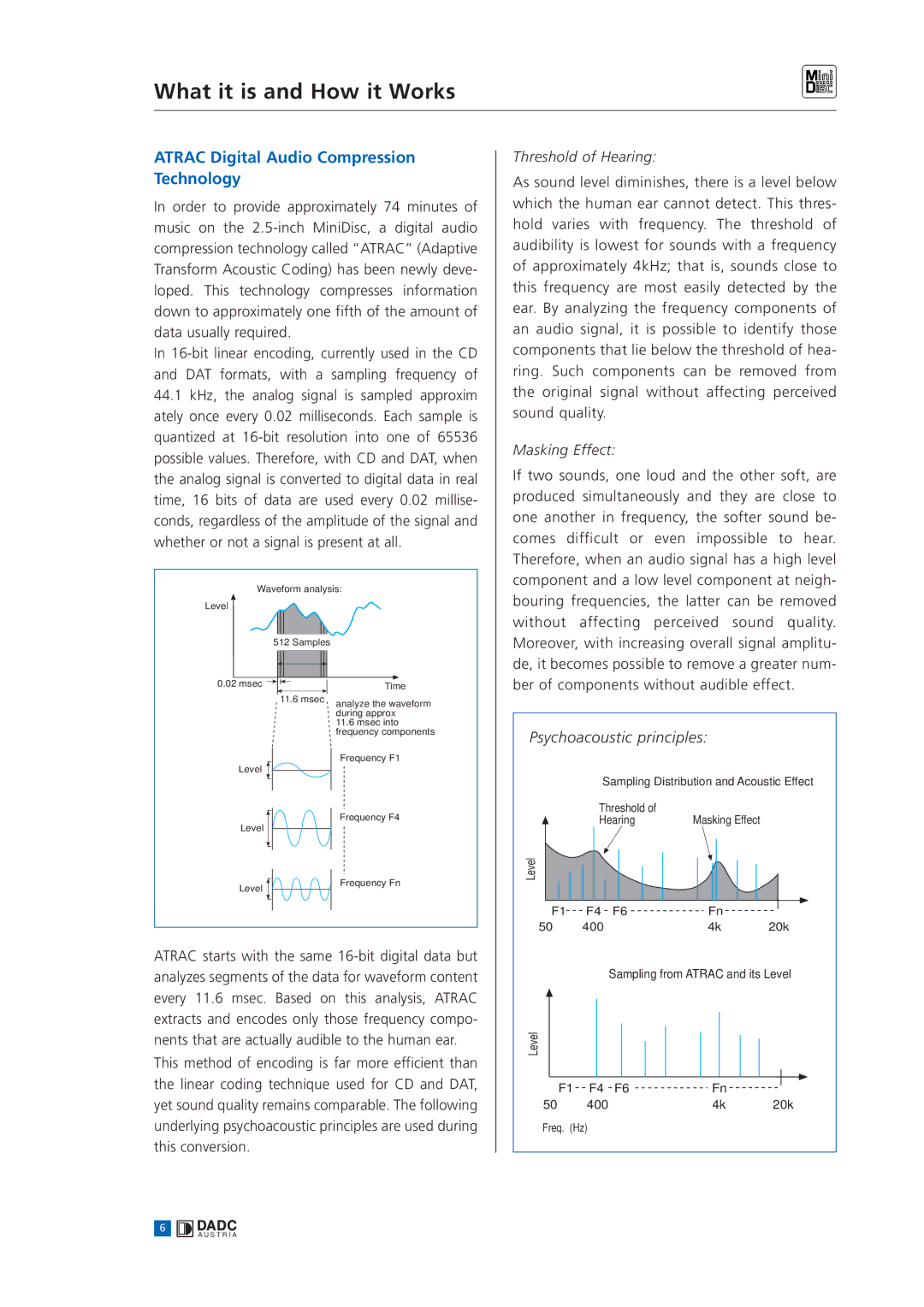
What it is and How it Works
ATRAC Digital Audio Compression Technology
In order to provide approximately 74 minutes of music on the
In
44.1kHz, the analog signal is sampled approxim ately once every 0.02 milliseconds. Each sample is quantized at
Waveform analysis:
Level
| 512 Samples |
|
0.02 msec |
| Time |
|
| |
| 11.6 msec | analyze the waveform |
|
| |
|
| during approx |
|
| 11.6 msec into |
|
| frequency components |
|
| Frequency F1 |
Level |
|
|
|
| Frequency F4 |
Level |
|
|
Level |
| Frequency Fn |
|
|
ATRAC starts with the same
This method of encoding is far more efficient than the linear coding technique used for CD and DAT, yet sound quality remains comparable. The following underlying psychoacoustic principles are used during this conversion.
6DADC
A U S T R I A
Threshold of Hearing:
As sound level diminishes, there is a level below which the human ear cannot detect. This thres- hold varies with frequency. The threshold of audibility is lowest for sounds with a frequency of approximately 4kHz; that is, sounds close to this frequency are most easily detected by the ear. By analyzing the frequency components of an audio signal, it is possible to identify those components that lie below the threshold of hea- ring. Such components can be removed from the original signal without affecting perceived sound quality.
Masking Effect:
If two sounds, one loud and the other soft, are produced simultaneously and they are close to one another in frequency, the softer sound be- comes difficult or even impossible to hear. Therefore, when an audio signal has a high level component and a low level component at neigh- bouring frequencies, the latter can be removed without affecting perceived sound quality. Moreover, with increasing overall signal amplitu- de, it becomes possible to remove a greater num- ber of components without audible effect.
Psychoacoustic principles: |
| |||
| Sampling Distribution and Acoustic Effect | |||
| Threshold of |
|
| |
| Hearing | Masking Effect |
| |
Level |
|
|
|
|
F1 | F4 | F6 | Fn |
|
50 | 400 |
| 4k | 20k |
|
| Sampling from ATRAC and its Level | ||
Level |
|
|
|
|
F1 | F4 | F6 | Fn |
|
50 | 400 |
| 4k | 20k |
Freq. (Hz) |
|
|
| |
